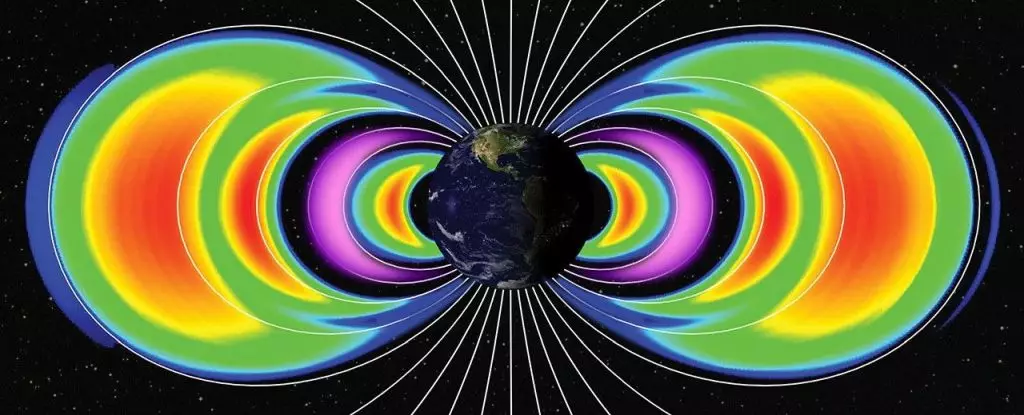In May 2024, an extraordinary solar storm unleashed a wave of energy that left an indelible mark on our planet. Triggered by an intense flurry of activity from the Sun, this storm sent a torrent of solar particles crashing into Earth’s magnetic field, creating an awe-inspiring spectacle of auroras that illuminated skies across regions seldom graced by such phenomena. However, the implications of this celestial event extended far beyond visual splendor, revealing a new layer of complexity in our understanding of Earth’s radiation environment.
In the aftermath of the storm, scientists observed an unprecedented phenomenon: the formation of two temporary radiation belts, brimming with high-energy particles. While the existence of radiation belts around Earth is a well-documented aspect of planetary science, the introduction of energetic protons into the newly formed zones is groundbreaking. Historically, radiation belts were primarily dominated by electrons; the presence of protons indicates a significant shift in the dynamic interactions between solar activity and Earth’s magnetic sphere.
Physicist Xinlin Li from the University of Colorado Boulder articulated the surprise felt among researchers, stating, “When we compared the data from before and after the storm, I said, ‘Wow, this is something really new.’” This admission underscores the excitement and curiosity that encapsulates scientific discovery, as unexpected findings often propel fields into new trajectories of research and inquiry.
Earth’s magnetic field serves as a crucial line of defense against the relentless barrage of solar particles—tiny bits of radiation emitted by the Sun. These charged particles are typically ensnared in the planet’s magnetic field, forming the well-known Van Allen belts, which consist of two primary layers: the inner and outer belts. This already intricate system was augmented by the May 2024 storm, creating a temporary environment that posed fresh questions regarding celestial mechanics and particle behavior.
NASA’s Colorado Inner Radiation Belt Experiment CubeSat provided critical data that led to these revelations. The two newfound belts offered a unique opportunity to study the properties of energetic particles in a context that had previously been theoretical. As stated by astronomer David Sibeck, “These are really high-energy electrons and protons that have found their way into Earth’s inner magnetic environment.” The presence of these new particles has implications for our understanding of space weather and its interactions with technology.
Remarkably, these newly identified radiation belts demonstrated a striking longevity; they persisted for an unprecedented three months—far more than the usual pattern of a few weeks. This prolonged duration speaks volumes about the storm’s intensity and the stability of the new particle formations. Following subsequent solar storms in June and August, the density of these belts was impacted, but some remnants continue to exist in the vicinity of Earth.
The prospect of the proton belt enduring for over a year invites further investigation. Understanding its decay rate and behavior can prove significant, particularly as particles in Earth’s orbit have the potential to disrupt satellite operations and communications. This highlights a critical intersection of astrophysics and technology, as researchers aim to inform engineers on protective measures against potential radiation exposure.
The current state of these radiation belts underscores an urgent need for ongoing monitoring and research. While the immediate hazard posed by these newly formed belts is yet to be quantified, their existence serves as a reminder of our planet’s vulnerability to space weather phenomena. Continuous analysis of the particle density and patterns influenced by solar activity will be pivotal in understanding the risks borne by technological systems and informing future engineering practices.
The solar storm of May 2024 stands as a landmark event in solar physics, unraveling mysteries of our planet’s external environment while raising new questions for scientists to explore. The complexities introduced by the temporary radiation belts are not merely academic; they resonate within the fabric of our daily lives, as satellite technology becomes increasingly integral to global communication, navigation, and infrastructure. Such revelations remind us of our position in the cosmos and the profound interconnectivity of phenomena that reach far beyond our immediate experience on Earth.

